Related Research Articles
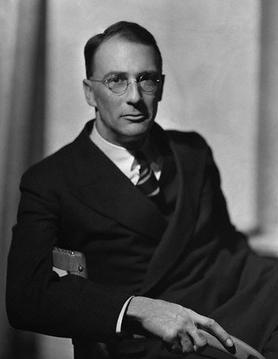
Cecil Louis Troughton Smith, known by his pen name Cecil Scott "C. S." Forester, was an English novelist known for writing tales of naval warfare, such as the 12-book Horatio Hornblower series depicting a Royal Navy officer during the Napoleonic Wars.

Cabrera is an island in the Balearic Islands, Spain, located in the Mediterranean Sea off the southern coast of Mallorca. It is a National Park. The highest point is Na Picamosques.
Horatio Hornblower is a fictional officer in the British Royal Navy during the Napoleonic Wars, the protagonist of a series of novels and stories by C. S. Forester. He later became the subject of films and radio and television programmes, and C. Northcote Parkinson elaborated a "biography" of him, The True Story of Horatio Hornblower.

Pierre Jacques Étienne Cambronne, later Pierre, 1st Viscount Cambronne, was a general of the First French Empire. A main strategist of the French Revolutionary Wars and Napoleonic Wars, he was wounded at the Battle of Waterloo.

The Happy Return is the first of the Horatio Hornblower novels by C. S. Forester. It was published in 1937. The American title is derived from the expression "beat to quarters", which was the signal to prepare for combat. This book is sixth by internal chronology of the series. Hornblower's past history as described here does not entirely accord with his history as revealed in the stories written later, but Forester never revised the book.

Captain Horatio Hornblower is a 1951 British naval swashbuckling war film in Technicolor from Warner Bros., produced by Gerry Mitchell, directed by Raoul Walsh, that stars Gregory Peck, Virginia Mayo, Robert Beatty and Terence Morgan.

The Battle of Bailén was fought in 1808 between the Spanish Army of Andalusia, led by General Francisco Javier Castaños and the Imperial French Army's II corps d'observation de la Gironde under General Pierre Dupont de l'Étang. This battle was the first open-field defeat of a Napoleonic army. The heaviest fighting took place near Bailén, a village by the Guadalquivir river in the Jaén province of southern Spain.

Mr. Midshipman Hornblower is a 1950 Horatio Hornblower novel written by C. S. Forester. Although it may be considered as the first episode in the Hornblower saga, it was written as a prequel; the first Hornblower novel, The Happy Return, was published in 1937.
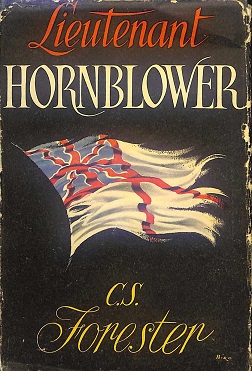
Lieutenant Hornblower is a Horatio Hornblower novel written by C. S. Forester. It is the second book in the series chronologically, but the seventh by order of publication.
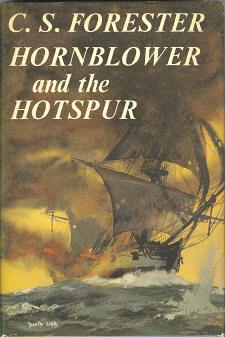
Hornblower and the Hotspur is a Horatio Hornblower novel written by C. S. Forester.
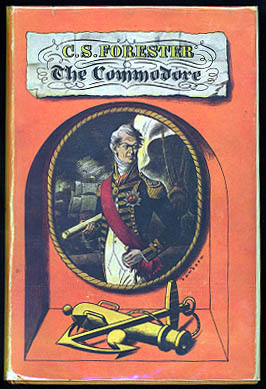
The Commodore is a Horatio Hornblower novel written by C. S. Forester. It was published in the United States under the title Commodore Hornblower.
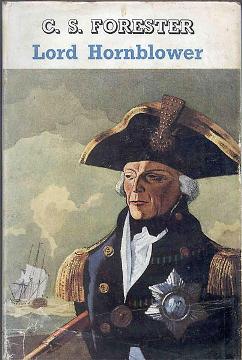
Lord Hornblower is a Horatio Hornblower novel written by C. S. Forester. Hornblower, a Knight of the Bath, is tasked with suppressing a mutiny on board a Royal Navy ship. He succeeds, and with reinforcements captures Le Havre. There follow several adventures and a disastrous affair in France, with Hornblower's eventual repatriation and reconciliation with his wife.

Hornblower in the West Indies, or alternately Admiral Hornblower in the West Indies, is one of the novels in the series that C. S. Forester wrote about fictional Royal Navy officer Horatio Hornblower.
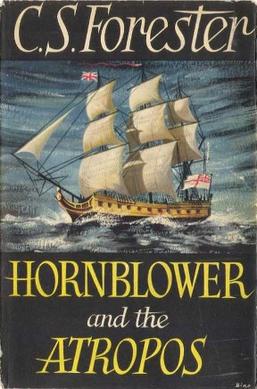
Hornblower and the Atropos is a 1953 historical novel by C.S. Forester.

Flying Colours is a Horatio Hornblower novel by C. S. Forester, originally published 1938 as the third in the series, but now eighth by internal chronology. It describes the adventures of Hornblower and his companions escaping from imprisonment in Napoleonic France and returning to England. It is one of three Hornblower novels adapted into the 1951 British-American film Captain Horatio Hornblower R.N..

The Armée des émigrés were counter-revolutionary armies raised outside France by and out of royalist émigrés, with the aim of overthrowing the First French Republic and restoring the monarchy. These were aided by royalist armies within France itself, such as the Chouans, and by allied countries such as Great Britain. They fought, for example, at the sieges of Lyon and Toulon.

The Invasion of Isle de France was a complicated but successful British amphibious operation in the Indian Ocean, launched in November 1810 during the Napoleonic Wars. During the operation, a substantial military force was landed by the Royal Navy at Grand Baie, on the French colony of Isle de France. Marching inland against weak French opposition, the British force was able to overwhelm the defenders in a series of minor engagements, culminating in the capture of the island's capital Port Napoleon and the surrender of Charles Decaen, the French governor. The surrender eliminated the last French territory in the Indian Ocean and among the military equipment captured were five French Navy frigates and 209 heavy cannon. Isle de France was retained by Britain at the end of the war under the name of Mauritius and remained part of the British Empire until 1968.

The Saint-Domingue expedition was a large French military invasion sent by Napoleon Bonaparte, then First Consul, under his brother-in-law Charles Victor Emmanuel Leclerc in an attempt to regain French control of the Caribbean colony of Saint-Domingue on the island of Hispaniola, and curtail the measures of independence and abolition of slaves taken by the former slave Toussaint Louverture. It departed in December 1801 and, after initial success, ended in a French defeat at the Battle of Vertières and the departure of French troops in December 1803. The defeat forever ended Napoleon's dreams of a French empire in the West.
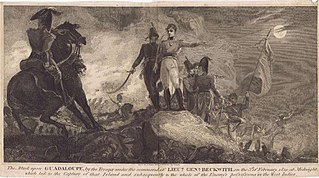
The Invasion of Guadeloupe was a British amphibious operation fought between 28 January and 6 February 1810 over control of the Caribbean island of Guadeloupe during the Napoleonic Wars. The island was the final remaining French colony in the Americas, following the systematic invasion and capture of the others during 1809 by British forces. During the Napoleonic Wars, the French colonies had provided protected harbours for French privateers and warships, which could prey on the numerous British trade routes in the Caribbean and then return to the colonies before British warships could react. In response, the British instituted a blockade of the islands, stationing ships off every port and seizing any vessel that tried to enter or leave. With trade and communication made dangerous by the British blockade squadrons, the economies and morale of the French colonies began to collapse, and in the summer of 1808 desperate messages were sent to France requesting help.
The Napoleonic Wars were a defining event of the early 19th century, and inspired many works of fiction, from then until the present day.
References
- ↑ Tom Holmberg (2001). "The Prisoners of Cabrera". The Napoleon Series. Retrieved 25 December 2019.
In the end the expedient decision was made—to strand the prisoners on the small island of Cabrera.
- "Cabrera: The mystery of death Island next to Mallorca". Inmobiliaria Mallorca. 9 May 2009. Archived from the original on 25 December 2019. Retrieved 8 July 2023.
- Alexander Mikaberidze, ed. (2018). Behind Barbed Wire: An Encyclopedia of Concentration and Prisoner-of-War Camps. ABC-CLIO. pp. 54–55. ISBN 9781440857621 – via Google Books.
- "Cabrera Prison Camp". Mallorca Days Out. Archived from the original on 25 December 2019. Retrieved 8 July 2023.When Napoleon abdicated in April 1814 arrangements were made to repatriate the survivors and two convoys took 3,700 men to France the following month; another 1,200 who had served in the Spanish army followed. Statistics do not express the misery the prisoners were subjected to but it is reckoned that around 11,800 were taken to Cabrera Island. Around 5,000, or 40 percent, died and lie in unmarked graves.